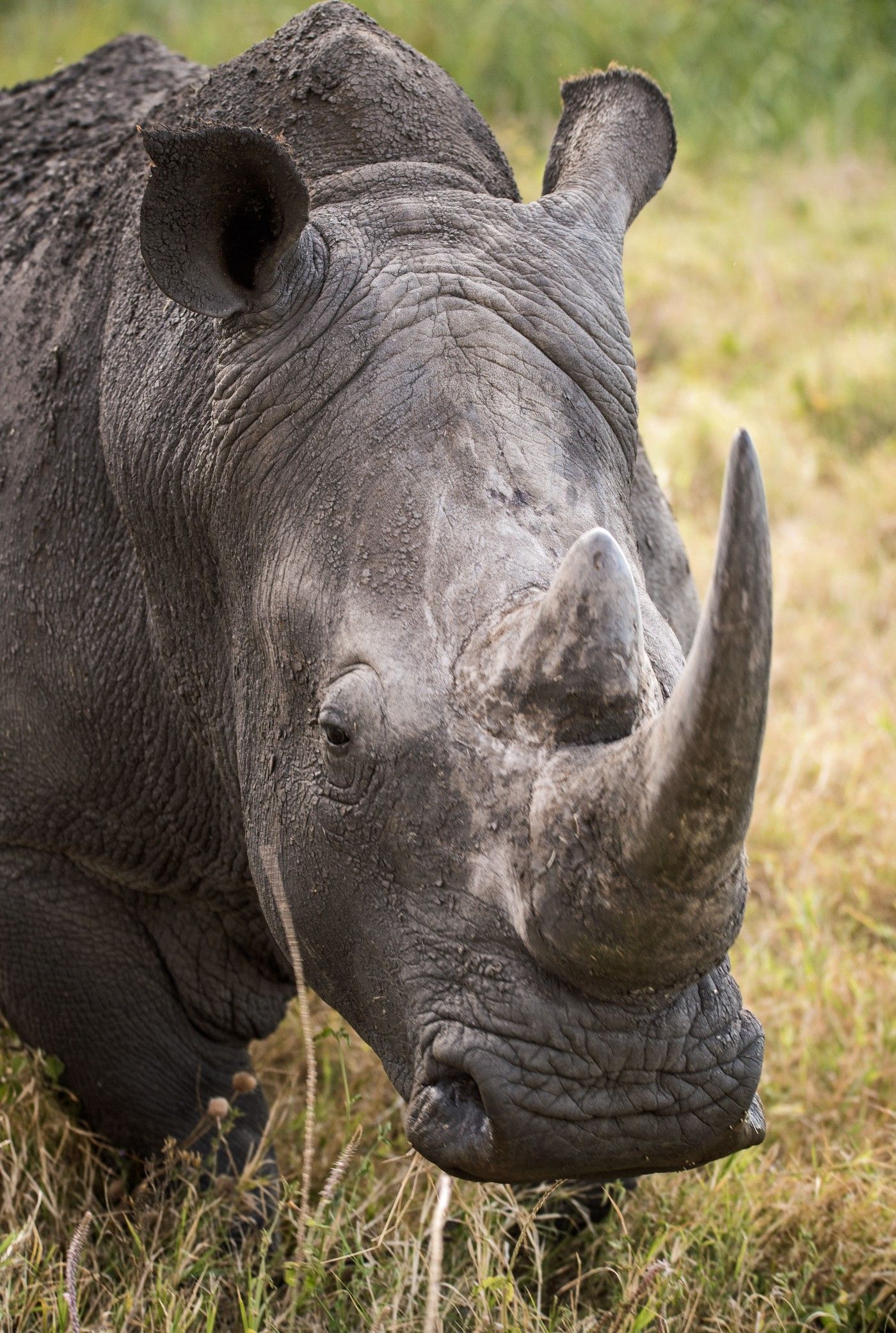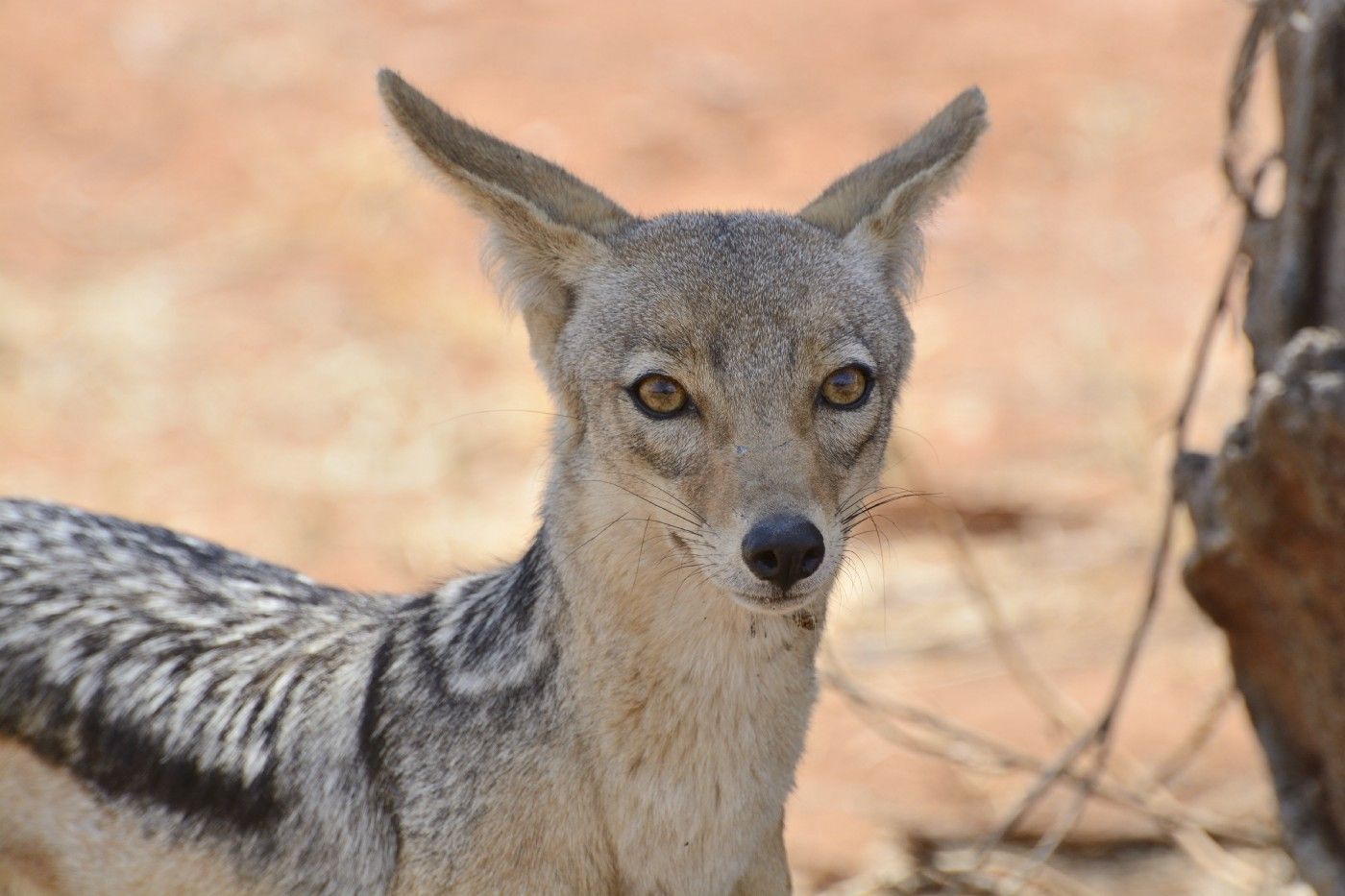A story of mutts and men, animal protection and a community’s appreciation in rural Kenya
Otis gave me a sideways look.
Well, I think he did. He’s a bloodhound puppy, and it’s sometimes very hard to tell what they’re looking at under that great mass of wrinkles. Then he stood up, all the tawny wonderfulness of him, his muzzle flopping in the early morning breeze as his energetic tail took over for the rest of his long, lanky body.
HUMAN! Pets! Tickles! Scratches! Oh my! Otis had no idea what he was in for, given my love of pups. His brother, tied to another nearby tree for me to meet shortly, howled as I tucked Otis’ appreciative head into my armpit and went after his belly with my fingernails. Dog heaven.
It was hot, but not as bad as it was going to get. I’d just arrived at the K-9 unit at Ol Pejeta, where rhinos have their last and best stand for reproducing and being reintroduced into the wild. This massive, 90,000+ plus acre conservation and community project some four hours out of Nairobi, lying in shadow of Mt. Kenya, has a multitude of programs in play, and this was my last day.
I’d been sent around all different parts of the organization, which is huge and multi-faceted. There was so much more to see, but I was nearly out of time. Visiting the dogs was the final treat before leaving Kenya.
Of course, since I’d be meeting the dogs, it turned out to be one of my favorites.
Otis is in training. His mum and sister, she of the monumentally annoying cone head while healing, were woofing their welcome as the camo-dressed men gathered around to answer my questions. I met Drum, the energetic and sweet-natured little Springer Spaniel who rested his paws on my shoulders, closed his eyes and simply breathed with pleasure as I rubbed his belly.
Then there was Deigo, the handsome, six-year-old Belgian Malinois, who was the expert at bringing down poachers.
Diego and his fellow pups have changed the direction of rhino protection here at Ol Pejeta. The manager of the program, David Gathirwa, who himself has grown into the dog training and tracking business, said that three years ago they had eight poachers. Others got in and got away with perhaps a little bit of mischief. Others were put off by the presence of both trained dogs and armed guards. Since then, nobody.
David, a compact man with a ready smile dressed in crisp camouflage gear, was pleased. He’d worked his way up to heading this department and had received considerable training, which he is now passing along to his staff.
While the dogs are part of the answer, the local community is the other key piece of the puzzle. Judy, who works in the Marketing Department, explained to me (she was translating) that at first, there was some distrust of the dogs. However, in the same way that Ol Pejeta has communicated to the community that the fences are there to keep animals in rather than keep people out, the dogs have ended up being used in the community to build good will.
For example, hearts and minds changed a lot when one or more of the dogs have been used to track a missing person, or reveal a thief. In fact, according to Judy, thefts are way down locally, as nobody wants to be sniffed out by one of these expert trackers. As a result, these dogs, who are clearly well-loved and cared for (Otis smelled like shampoo), have created an additional bond with the locals.
As the community has continued to enjoy benefits such as the assistance of this unit through Ol Pejeta, people have kept an increasingly wary eye out for strangers. Poachers have to enter through the local town, and strangers are noticed and reported right away. That way, not only is Ol Pejeta notified of a potential problem in advance, the trackers and Diego can be on point in case anyone tries to take out a precious rhino or other valuable wildlife.
Despite the appearance of a reduced threat, no one can take a break. The dogs are in constant training. As I watched, one young man walked out into the open field with the training device, a thick protective cover used in police dog training, on his left arm. Once he was spotted by Diego, the handlers let the dog loose, and he tore across the open ground at speed, grabbing the “poacher” and rendering him harmless.
A British Army officer has been particularly helpful to Ol Pejeta in coaching the trackers how to train their dogs. They are now breeding the blood hounds, and everyone stays in top shape and sharp at all times.
All the dogs were immensely happy and affectionate. They are accustomed to love, kept tick-and flea-free and given plenty of work to do. That they have also built bonds of trust with the locals through their sleuthing work is just one more reason why nobody has seen or reported a poacher since 2017.

Unfortunately, the threat against the rhinos, which are fighting for their very survival here, is growing. As Samuel Mutisya. Ol Pejeta’s Head of Conservation explained to me, the fact that there is a much larger Chinese middle class, and a burgeoning Asian population, the demand for rhino and other exotic parts has also risen. The pressure on these magnificent animals isn’t going away. And as rhino protection gets better, the price for their bits and pieces goes up exponentially, as does the motivation for poachers to be successful.
That makes Ol Pejeta’s job even more important, ensuring that their increasingly close and tightly-knit relationship with the nearby community continues to be mutually beneficial, and the people they train are as committed as the staff to their work.
The young man who introduced me to the dogs is an intern spending eighteen months at Ol Pejeta with the K-9 unit. I asked him what he wanted to do.
“Protect animals,” he said, grinning broadly. Ol Pejeta’s dogs are not only teaching him to love what he does, but love what he protects. With the local community also benefiting from the hounds and their hard work, their conservation effort has a better chance of surviving the pressures of a predatory world.

Comments powered by Talkyard.